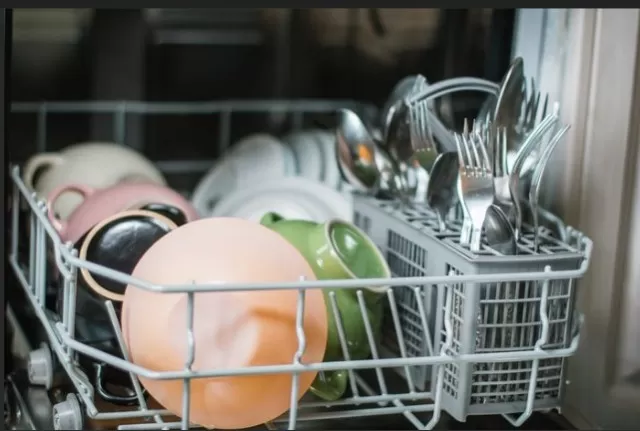5 Dishwasher Loading Mistakes You Should Avoid. Unknowingly, improper dishwasher loading can lead to damaged, rusty, and persistently Dirty Dishes. Maximize your dishwasher’s performance by steering clear of these 5 common mistakes that may be responsible for your lackluster dishwashing results.
Skip the Pre-rinsing

Pre-rinsing your dishes before loading them into the dishwasher can actually be a waste of water and energy.
Modern dishwasher detergents are specifically formulated to cling to food particles and effectively remove them during the wash cycle. Unless you won’t be running the dishwasher for an extended period, it’s sufficient to scrape off any large food remnants into the trash before loading the dishes.
Mind Your Large Utensils Placement
To prevent rapid dulling and degradation, it’s best to refrain from placing sharp knives and wooden spoons in the dishwasher, as the hot water can be harsh on them.
Instead, lay large plastic and metal utensils, such as spoons and spatulas, flat in the top rack of the dishwasher. Placing them in the utensil basket may obstruct the spray and hinder water from reaching the other dishes effectively.
Mindful Placement of Glassware

A prevalent misconception is that glassware should be positioned over the tines in the top rack of the dishwasher.
However, to avoid cracks and chips caused by rattling or bumping, cups and glasses should be placed between the tines instead. This placement ensures they remain stable and protected during the wash cycle.
Mix Up Your Silverware
Attaining Spotless Utensils: Effective Positioning in the Utensil Tray
To ensure that your spoons and forks come out sparkling clean from the dishwasher, it’s important to diversify their positions within the utensil tray. By following these tips, you can prevent nesting and allow for effective cleaning:
- Alternate handle directions: When placing spoons and forks in the utensil tray, alternate their handle directions. Some can be positioned with handles facing up, while others have handles facing down. This arrangement helps to create space between the utensils, preventing them from interlocking or nesting together during the wash cycle.
- Ensure separation: By keeping the utensils separated within the tray, you allow the soap and water to reach all surfaces, ensuring a thorough scrubbing. This prevents any residues or food particles from being trapped between the utensils and ensures they come out spotless.
By implementing these simple positioning techniques, you can maximize the cleanliness of your spoons and forks in the dishwasher. Remember to check your dishwasher’s specific instructions for loading utensils and adjust accordingly for the best results. Enjoy your perfectly clean utensils!
Vary Your Plate Directions

Optimize Dishwashing Efficiency: Proper Plate Loading Technique
When it comes to loading your plates in the dishwasher, there are a few tips to keep in mind for optimal efficiency and thorough cleaning. Avoid the common mistake of loading all your plates in the same direction and instead follow these guidelines:
- Face plates towards the center: To ensure uniform access to the soap and sprayer, arrange your plates facing towards the center of the dishwasher. This allows for better water distribution and more effective cleaning.
- Alternate between large and small plates: When loading plates, alternate between placing larger and smaller sizes next to each other. This helps to optimize water flow and encourages better cleaning by preventing plates from stacking closely together.
By implementing these simple loading techniques, you can maximize the efficiency of your dishwasher and achieve cleaner dishes. Remember to also follow any specific loading instructions provided by your dishwasher manufacturer for best results. Happy dishwashing!
*The information is for reference only.